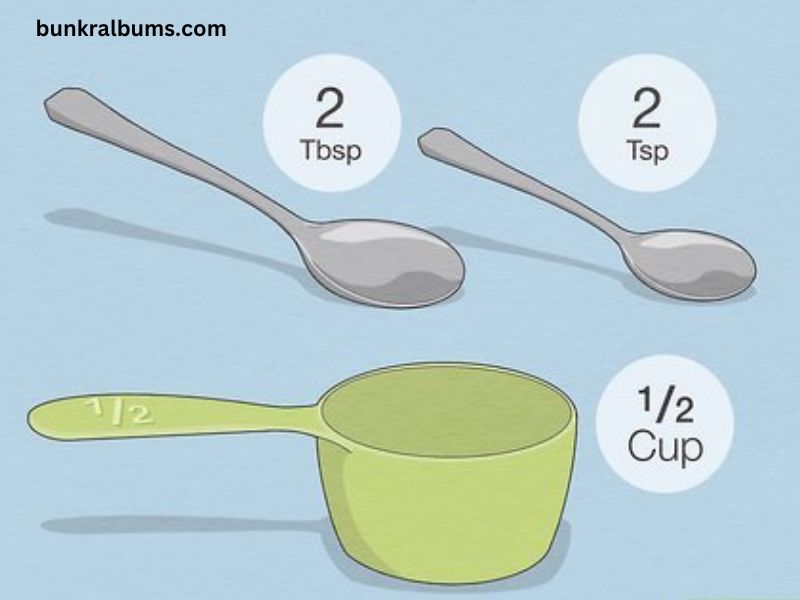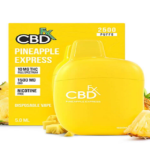In cooking and baking, accurate measurements are key to achieving the perfect dish. Whether you’re following a detailed recipe or experimenting in the kitchen, understanding the relationship between different units of measurement is essential. One common question that arises during food preparation is, “How many tablespoons are in 1/3 cup?”
In this article, we will break down the answer, discuss the importance of accurate measurements in cooking, and explore tips for converting between cups and tablespoons. By the end of this guide, you’ll have a clear understanding of how many tablespoons are in 1/3 cup and why it matters in your kitchen endeavors.
The Basics: How Many Tablespoons Are in a Cup?
Before we dive into the specific conversion for 1/3 cup, it’s important to understand the general relationship between cups and tablespoons. In the U.S. customary measurement system, which is used in most American recipes, the following conversions are key:
- 1 cup = 16 tablespoons
- 1/2 cup = 8 tablespoons
- 1/4 cup = 4 tablespoons
From this basic understanding, you can derive other conversions, including for smaller portions like 1/3 cup.
So, How Many Tablespoons in 1/3 Cup?
To calculate how many tablespoons are in 1/3 cup, we can simply use a bit of math. Since 1 cup equals 16 tablespoons, you can multiply 16 by the fraction 1/3:
- 1/3 cup = 16 tablespoons × 1/3 = 5 and 1/3 tablespoons.
This means that 1/3 cup is equivalent to 5 tablespoons plus 1 teaspoon (since 1/3 of a tablespoon equals roughly 1 teaspoon).
This conversion is essential for any recipe that calls for a 1/3 cup measurement, whether you’re dealing with flour, sugar, butter, or any other ingredient.
Why Accurate Measurements Matter
When it comes to cooking, precision can make or break a recipe. This is especially true for baking, where the chemistry between ingredients like flour, sugar, leavening agents (such as baking soda or baking powder), and liquids is crucial to the final result. Even small variations in the amount of an ingredient can affect the texture, flavor, and appearance of the finished product.
Here are a few reasons why it’s important to use accurate measurements in your recipes:
1. Consistent Results
Recipes are often carefully developed and tested to produce consistent results every time. If you use inaccurate measurements, you may end up with a dish that looks or tastes different from what was intended. For example, too much flour can make baked goods dense and dry, while too little can cause them to spread too much or become undercooked.
2. Balancing Flavors
Inaccurate measurements can throw off the balance of flavors in your dish. For example, using too much salt can make your dish overly salty, while using too little sugar can result in a bland dessert. Accurate measurements help ensure that all ingredients work together harmoniously.
3. Ensuring Proper Texture
The texture of your dish can be affected by the amount of ingredients you use. Too much liquid can make your dish soggy, while too little fat can result in a dry or crumbly texture. Precise measurements are especially important when working with delicate ingredients like leavening agents, which require exact ratios to produce the desired rise or texture.
4. Scaling Recipes
Accurate measurements are essential when scaling recipes up or down. Whether you’re doubling a recipe to feed a crowd or halving it for a smaller portion, maintaining the correct ratios between ingredients is key to achieving the same great results. Knowing the conversion between cups and tablespoons allows you to easily adjust your measurements as needed.
How to Measure Accurately
Now that we know the importance of accurate measurements, let’s talk about how to ensure you’re measuring ingredients correctly in the kitchen. Here are a few tips to keep in mind when using cups and tablespoons:
1. Use the Right Tools
For dry ingredients like flour, sugar, or cocoa powder, it’s best to use dry measuring cups and spoons. For liquids like milk, oil, or water, use liquid measuring cups, which have a spout for easy pouring. Using the appropriate tools will help you achieve more precise measurements.
2. Level Off Dry Ingredients
When measuring dry ingredients like flour, use a spoon to scoop the ingredient into the measuring cup, then level it off with the flat edge of a knife or spatula. This ensures that you’re not packing the ingredient down, which can result in over-measurement.
3. Spoon Liquids Slowly
When measuring liquids in tablespoons, it’s easy to accidentally overfill the spoon, leading to inaccurate measurements. To avoid this, spoon liquids slowly and pour carefully into your measuring spoons.
4. Measure by Weight When Possible
For greater accuracy, especially in baking, consider measuring ingredients by weight using a kitchen scale. Weight-based measurements remove the guesswork and can be more precise than using volume-based measurements like cups and tablespoons. Many recipes provide both volume and weight measurements for this reason.
Common Ingredient Conversions for 1/3 Cup
Now that we know how many tablespoons are in 1/3 cup, let’s explore how this conversion applies to some common ingredients. While the number of tablespoons remains the same (5 and 1/3), the weight of ingredients can vary depending on their density.
1. Flour
- 1/3 cup of all-purpose flour = 5 tablespoons + 1 teaspoon = approximately 43 grams.
2. Sugar
- 1/3 cup of granulated sugar = 5 tablespoons + 1 teaspoon = approximately 67 grams.
3. Butter
- 1/3 cup of butter = 5 tablespoons + 1 teaspoon = approximately 76 grams or about 1/3 of a stick of butter.
4. Milk
- 1/3 cup of milk = 5 tablespoons + 1 teaspoon = approximately 79 milliliters.
5. Oil
- 1/3 cup of vegetable or olive oil = 5 tablespoons + 1 teaspoon = approximately 79 milliliters.
When to Use This Conversion
Understanding the conversion from 1/3 cup to tablespoons can be helpful in various scenarios:
- Scaling Recipes: If you’re scaling a recipe down or adjusting the ingredient quantities, being able to convert between cups and tablespoons will allow you to maintain proper proportions.
- Limited Measuring Tools: Sometimes, you may not have all the measuring tools you need on hand. Knowing that 1/3 cup is equivalent to 5 tablespoons plus 1 teaspoon allows you to measure accurately even without a 1/3 cup measure.
- Portion Control: When you’re looking to reduce portion sizes or adjust quantities for specific dietary needs, using tablespoon measurements instead of larger cup sizes can help you control portions more precisely.
Conclusion
Understanding how many tablespoons are in 1/3 cup is just one piece of the puzzle when it comes to cooking and baking with accuracy. Whether you’re following a recipe to the letter or making adjustments on the fly, accurate measurements are key to achieving the best possible results.
By knowing that 1/3 cup is equivalent to 5 tablespoons plus 1 teaspoon, you can confidently tackle any recipe and ensure that your ingredients are perfectly proportioned. Remember that precision matters, especially in baking, where even small deviations can affect the outcome of your dish.
The next time you find yourself in the kitchen, armed with your measuring spoons and cups, you’ll be well-prepared to measure ingredients accurately and create delicious, consistent dishes every time.







